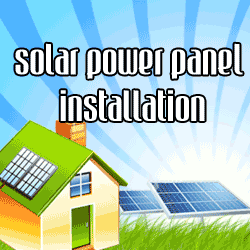

I recently attended a global eco design conference. Whilst the basic principles of a sustainable house such as insulation, ventilation and orientation to suit the climate were good - the resulting houses seemed to lack something. They didn't seem to have much intrinsic beauty or elegance.
The only principle that was mentioned that excited me was "bio-mimicry" - copying nature. Although the concept has been around for some time, it has been brought to prominence recently by by Janine Benyus in her book ""Biomimicry, Innovation Inspired by Nature". It was mentioned at the conference by Ray Anderson - an American manufacturer of commercial carpet tiles who is trying to make his company more sustainable and it was also touched on by Dr David Suzuki - the famous environmentalist - who also spoke at the conference. It seems to be the latest buzz word.
Perhaps it is the fact that Vedic houses - those based on ancient Sthapatya Vedic principles - are also based on natural design that makes them have a better feeling and which makes them look more appealing.
I have had a house built according to these principles. It faces true East and is aligned to the cardinal points. This design in accordance with natural laws is called "Vastu". You enter from the East and North sides only. One of the main guiding principles is that everything good comes from the East. But this doesn't mean that you can't also design your house to suit the climate (in my case the tropics) and filter the light if necessary and have large eves.
So the design corresponds to the effect of light on the earth - to the effect of the sun. In fact you can work out what true North is simply by observing what the sun does to the shadows it creates at different times of day. You can also use a GPS to confirm it.
In Vedic architecture the placement and dimensions of the rooms, as well as the length, width and elevation of the building are individually calculated. The measurements are based on ancient mathematical formulas. These formulas take into consideration, among other factors, the relationship of the house owner with the planets according to Jyotish (Indian Astrology). So the design relates to the people - it isn't based on some man-made notions of what would be good.
According to Vedic principles, the nourishing aspects of the house are placed on the East side of the house just as the rising sun coming from the East provides nourishment. So the meditation room is placed in the North East corner to nourish the spiritual aspects of the individuals in the house. The kitchen which nourishes the physiology is placed in the South-East. The North is considered the best side of the house in which to pursue creative activities and so that is where the study is located. The Western side of the house embodies the qualities of the setting sun - that being relaxation, calmness and restful sleep. So it is the best side on which to locate bedrooms and relaxation rooms. So in this sense, they are also mimicking nature.
I think that a lot of houses these days lack the fine details (see http://www.newhousebuilding.com). We used to have the beauty of ornate cornices and ceilings shaped like flowers and so on. When Ray Anderson talked about bio-mimicry he gave the example of his carpet tile designers going into the forest. They found that every part of it was different and that no two leaves or other parts of it were the same and yet the overall effect was one of unity. So he decided to make a range of tiles where no one tile was the same as the other. They were very popular. This also explains the beauty of marble tiles - no one tile is ever the same as all the others.
Vedic houses have this attention to detail and their aesthetic beauty arises as a result of it. For example, the house is elevated on a plinth which makes it appear more grand and stately and the roof is adorned with an intricately shaped and curved kalash. Modern sustainable houses need to learn some of these principles so that they too will be satisfying on all levels and not just functional.
Article Source: http://EzineArticles.com/?expert=Stephanie_Chambers















